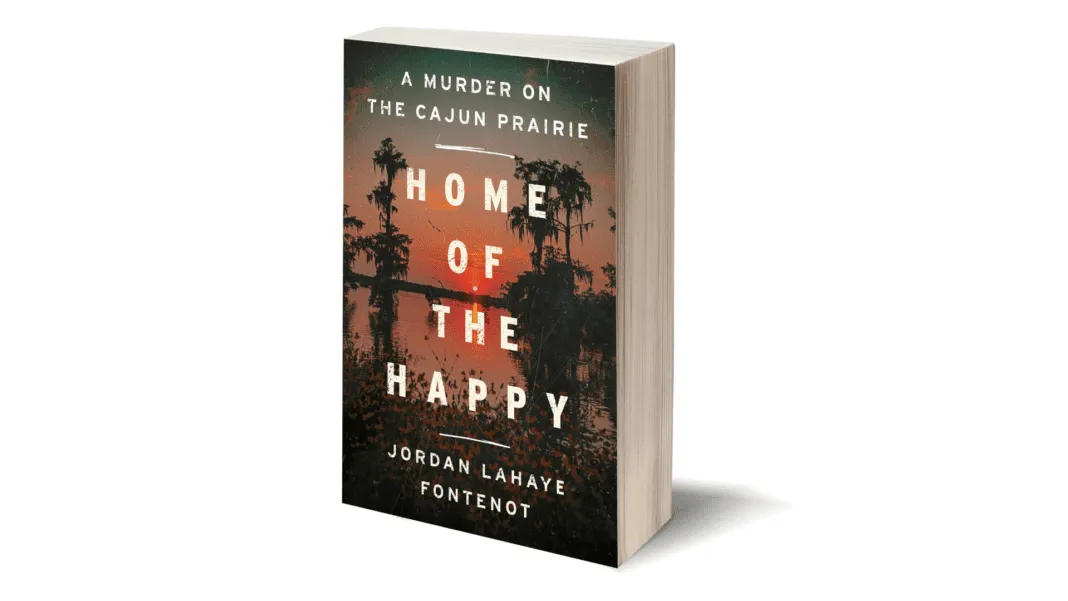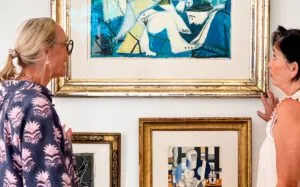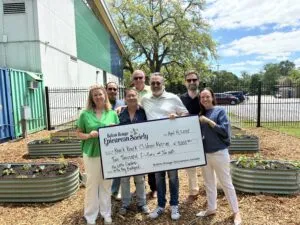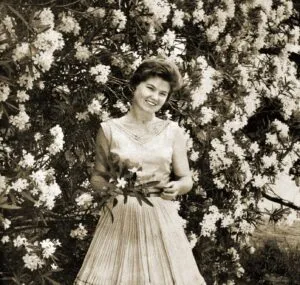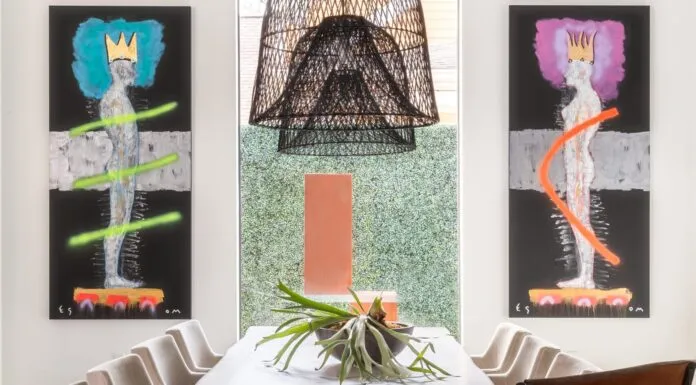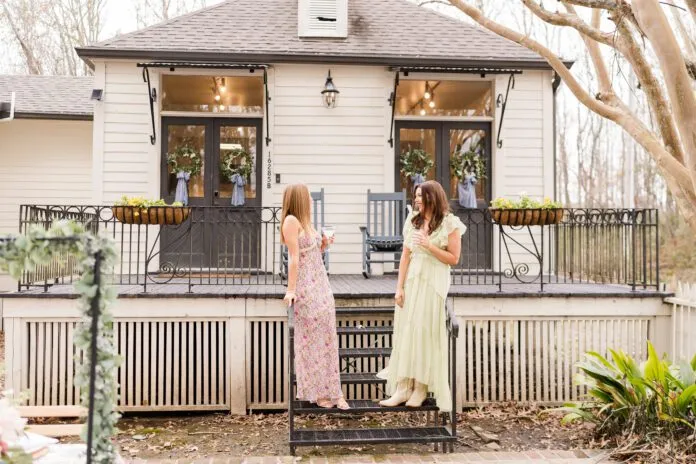Author Jordan LaHaye Fontenot talks her debut book and the family tragedy that inspired it all
From an essay in a creative writing class to a college thesis to a newly published book, Jordan LaHaye Fontenot’s author debut is the result of nearly a decade of work—and the young writer is only in her late 20s. In Home of the Happy, the former inRegister intern investigates the mysterious circumstances of her great-grandfather’s 1983 murder in Mamou, Louisiana, the place where she also grew up.
Interviewing friends, family and others, she delves into the elusiveness of the truth and the lasting toll of a tragedy like this. But underneath the case itself, Fontenot’s book also showcases the beauty of South Louisiana, the love of a family and the ties that bind us all.
Read on to hear from Fontenot herself.
Have you always wanted to be an author? What has your journey to this accomplishment been like?
There is a funny little origin story. I have this memory of my kindergarten teacher showing our class a children’s book and describing the difference between an author and an illustrator and just being so fascinated and even obsessed with the concept of “an author.” I was a big reader at a young age—I was part of this group of friends in like fourth and fifth grade that would read books at recess. And around that time, I wrote a short story that my grandfather had “published” into a “book”—really more like a pamphlet with some clip art, and it was my most prized possession.
So, the dream was there really early, but around the time I got to high school, it began to feel more remote and unrealistic, in the same category as becoming a professional singer or a movie star. I became more self-conscious about the writing I was doing, less proud of it.
When I started college, I majored in English, thinking I would find a job in copywriting or teaching. I wasn’t really sure what I would do, but English had always just been the part of school I enjoyed the most. It wasn’t until around junior year, when I started learning about long-form nonfiction and taking some journalism classes, that creative writing began to feel like something I could pursue as a career.
Home of the Happy started as an essay about my great-grandfather’s murder for my first creative writing class. But then, I kept digging into the mysteries of the story and just got kind of obsessed. When I had gathered a certain amount of information, a professor eventually told me that this project could be a book. And it kind of clicked, like this was the path the whole time.
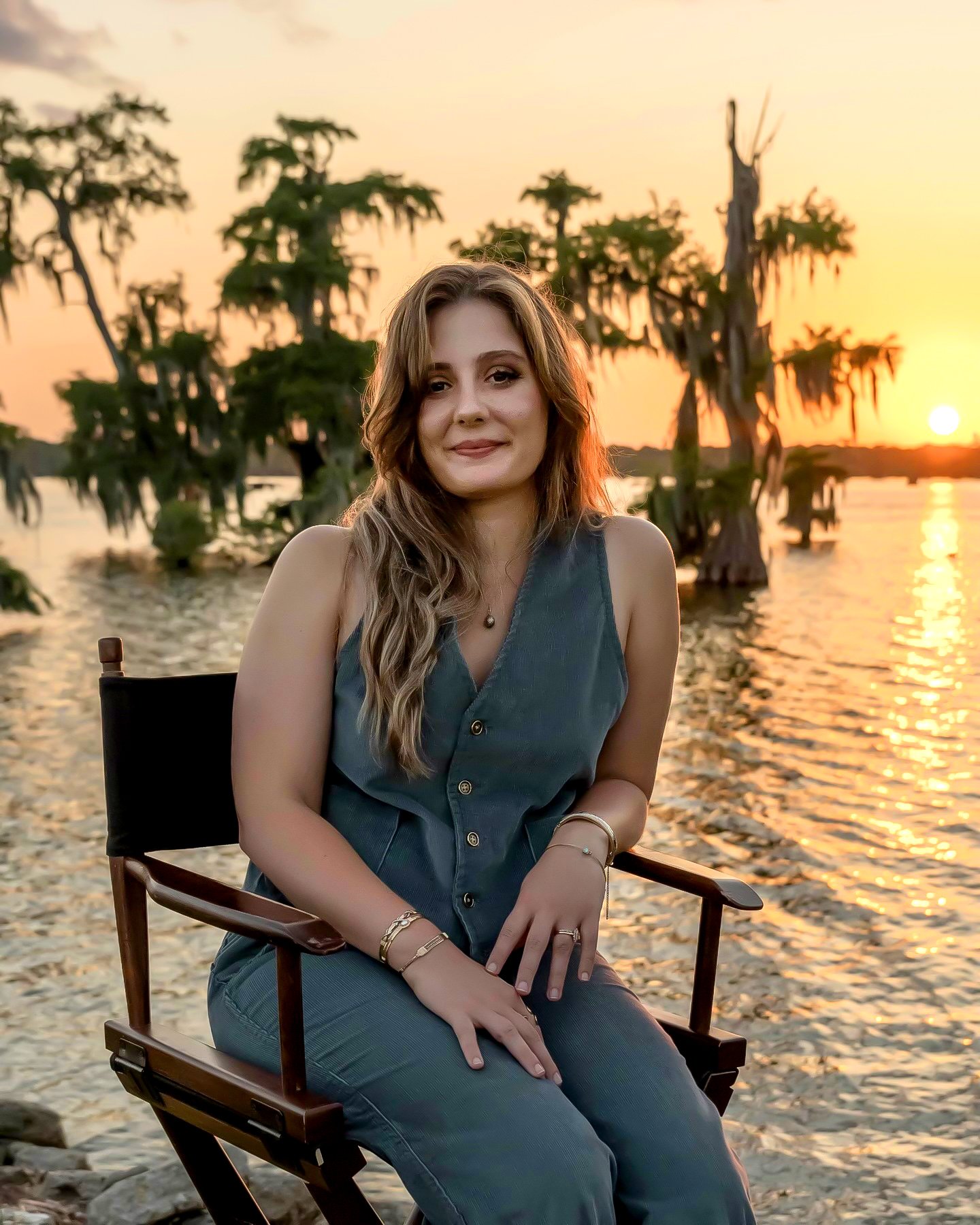
Tell us a little about the story. What can readers expect?
The book is an account of my journey re-investigating my great-grandfather’s kidnapping and murder in 1983 (13 years before I was born) in Mamou, Louisiana. It was a story I grew up knowing about, but in the vague sense of “this crazy thing happened a long, long time ago.”
But when I was in my early 20s, I started to ask more questions. I had this somewhat sudden realization that this had happened not all that long ago and that it had profoundly impacted the lives of my father, my grandparents, and my aunts and uncles. And really, my entire hometown. Many people are still carrying around unresolved trauma, and across our community, there remains this pall of doubt and conspiracy about the whole event.
The reader follows me as I uncover the details of the day Aubrey LaHaye was taken from his home, the ten days of search parties and FBI investigations that followed before his body was found in the Bayou Nezpique, and the ultimate trial and conviction of John Brady Balfa. I interview family members and people across the community, dig into newspaper archives and court documents, question conspiracy theories, and try to draw out answers and truth from a case that has been shrouded in mystery for 40 years now.
Beneath the story of the crime itself is also an account of my shifting relationship to my home. The darkest parts of my family’s past are layered over the very same physical landscape of my own, really quite idyllic, childhood. The bayou where Aubrey’s body was found, for instance, is the same bayou that ran right by my house growing up. The house where he was kidnapped from is my Parrain’s house now, a place I return to each year for Christmas and baby showers. It’s where my own engagement party was held, right in the middle of my work on this book.
What was it like taking on such a deeply personal story/investigation for your first book? What were the challenges?
For me, writing has always been a deeply personal exercise. Writing about my life, my home and my family is where I am most comfortable. I say this now as I keep trying to write something fiction, something far away from Evangeline Parish, Louisiana—and keep finding myself back in the realm of documentation and memoir.
So, in a sense, the actual writing of this book came very naturally. The research, though, was where the challenges arose. There were many very difficult, vulnerable conversations with family members—who were all incredibly generous with me in sharing their stories. There were absolutely moments during the interviews and research that were just devastating to uncover and contemplate and then find a way to write about. I definitely had to take breaks because it got really heavy at certain points.
There were also a lot of moments in writing this book where I feared I was getting to places that might hurt people, either by revealing new and painful information I’d uncovered or by making public things that have, until now, been kept within the confines of our family and community. There was a constant weighing of journalistic objectivity against my responsibility to my family, and I certainly fell on either side of that balance at different points in the book. There is no way to be 100% objective in telling a story like this, and I tried to transparently lay that struggle on the page.
Is there anything you learned or any moments you experienced during the writing process that have stuck with you?
As a young journalist, the biggest lesson this project has taught me is how elusive, and maybe even mythic, absolute truth can be. When you’re dealing with histories, you’re dealing with narratives told from particular perspectives. What I had to work with, piecing this story together, were decades-old memories, secondary sources, and the exaggeration of talented Cajun storytellers. Not to mention missing and redacted records, error-ridden news articles, and straight-up lies. It was a total wild-goose chase!
My work as a writer, in general, tends to sit somewhere between journalism and essay, and I think my book is a work that somewhat grapples with that—the tension between gathering information in the interest of relaying fact and attempting to make sense of mystery.
While navigating the frustrations of figuring out how to hold all of this in my book, it struck me deeply that when we receive histories that are tidy, with a beginning, middle, and end and a clear, satisfying resolution, well, the truth is that someone likely inserted their fiction somewhere to make them that way. It took me a while to figure out, but for this story, certainly, the most honest thing in the end was to lay the ambiguities and the complications and the unanswerable questions bare.
Were there any unexpected moments throughout the process?
There were many, but perhaps the most incredible was—years into my research—learning that the man convicted of my great-grandfather’s murder, John Brady Balfa, was (and still is) actively seeking post-conviction relief based on an innocence claim. That revelation gave the entire story, overnight, a renewed sense of urgency.
Has your family read the book? How did they react?
My immediate family, my parents and brothers, have. My dad’s opinion was the one that mattered most—he’s really been my biggest supporter and confidante all the way through. He’s also my direct connection to the story itself, my primary source. He called me late the night he finished it and told me … just … everything I needed to hear from him. It was pretty emotional for both of us.
It was interesting to get my brothers’ impressions. There’s been so much silence around this event, and most of our generation only knows the barest details of it. I’ve been living so close to the story these past eight or so years, and now my cousins and my brothers can share in this history, our history, too.
How long did it take for this project to come to fruition, from idea to publishing?
It has been a long haul—almost an entire decade! I wrote the first essay in early 2017, which is also when I started interviewing my family members. The plan was to use the essay as my honors thesis at LSU. Eventually, that project expanded into a book proposal, which I submitted to a committee in 2018.
In the years after graduation, I worked on the book in fits and starts—doing more research than writing, kind of dragging my feet (imposter syndrome) about starting the publishing process. But in 2021, I finally decided to begin querying literary agents. I was incredibly fortunate to meet my agent, Mina Hamedi, early in the process, and things took off from there. She sold the proposal to Mariner Books (an imprint of HarperCollins) by the end of the year, and I spent all of 2022 finishing it under contract, turning in the final manuscript in January of 2023. From there, various circumstances between the publishing industry and the court system forced us to push the book’s release back a few times. But we’re finally here!
What do you hope readers will take away from the book?
Gosh, there are layers to that question. For Louisiana readers, I hope that there is a recognition and appreciation of our world as something multidimensional, not all jolly fiddlers and crawfish, nor government corruption and mafia underworlds—but all of it, and so much more. For non-Louisiana readers, I hope to draw a new and energized eye to this strange and beautiful part of America and the deeply complicated people who live here.
And for all readers, I hope that people can see in my family’s story the far-reaching impact of violence and trauma across a community and through the generations, and that healing can look different for everyone. I believe some of my family survived this by suppressing the story—staying silent about it. But that silence did come with a price.
What can we expect from you in the future? Do you have future projects on the horizon?
Not quite on the horizon, but perhaps just beyond it. I’ve started and stopped a few potential book projects over the past year, but I am still in a place of ideating and experimentation. Just getting used to writing for fun again, writing about anything other than family trauma and murder. Right now, I’m leaning towards an essay collection—but ask me again in six months!
How can readers connect with you?
Readers can find me on Instagram @jordanlahayefontenot. They can also subscribe to my (free!) newsletter “In the Home of the Happy” on Substack, where a few times a month, I share behind-the-scenes and bonus material on the book, my family history and my writing life.
Throughout April, I’ll also be going on a book tour around Louisiana, and would love to meet readers and sign their books in person! Upcoming Baton Rouge area events include a presentation at the EBRPL Main Library at Goodwood on April 16 at 6 p.m., the Country Roads magazine launch at St. Francisville’s The Conundrum on April 25 at 5:30 p.m., and Indie Bookstore Day at Cavalier House Books in Denham Springs on April 26 at 1 p.m. Other dates in Lafayette, New Orleans, and beyond will be listed on my Instagram, Substack, and website.




